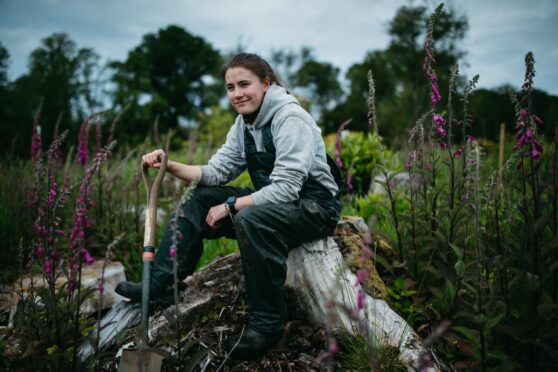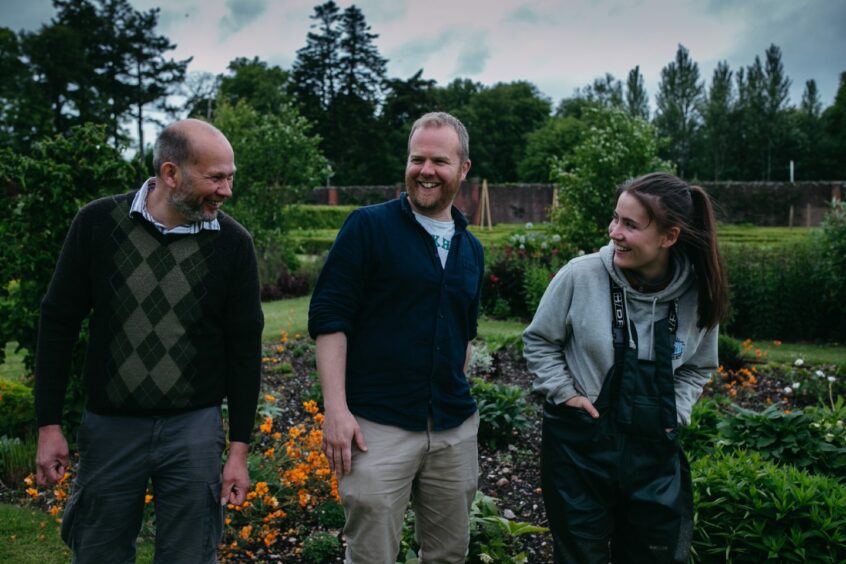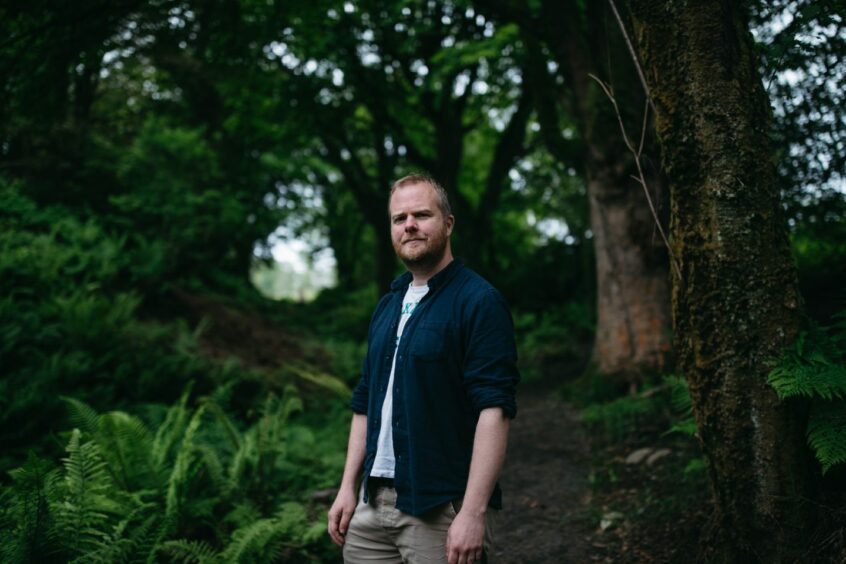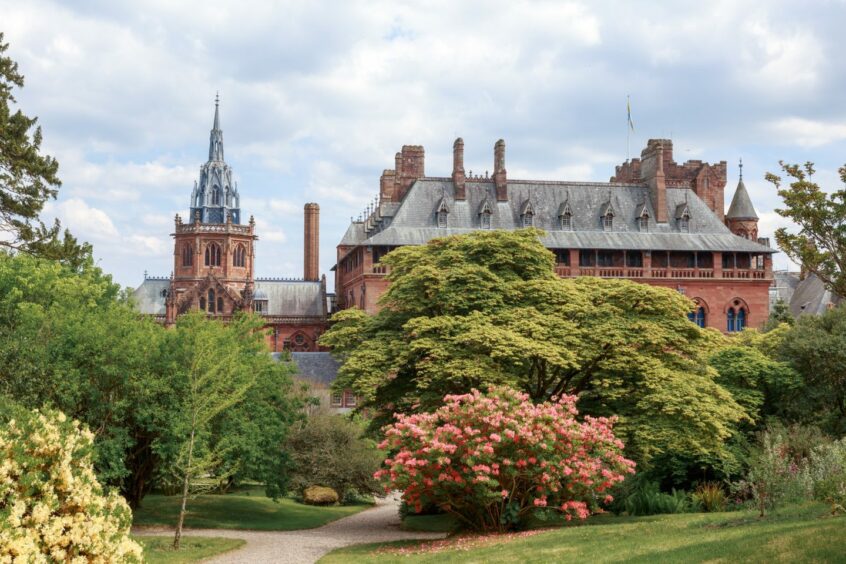
It has lain almost hidden for more than a century but, slowly, gently, is being resurrected.
Acres of overgrown shrubs have been hacked away; encroaching, self-seeded trees have been removed and from beneath a tangle of moss and ferns, a 19th Century garden has been revealed again at Mount Stuart on Bute.
The sleeping ghost was a Calvary garden, a type of religious-inspired garden that was popular during Victorian times, and which had been commissioned in 1896 by the 3rd Marquess of Bute from Thomas Mawson, one of the greatest landscape architects of the era.
His scheme involved elaborate water features, with the burn that comes bubbling off the hillside being channelled into a series of pools and cascades and soon his ambitious vision was taking shape, with nature diverted, earth moved and elaborate plantings softening its edges. However, the design was never completed and gradually nature took over, smothering the Calvary garden beneath a thick layer of greenery.
That was until last year, when the gardeners at Mount Stuart began removing decades of growth to reveal the bones of Mawson’s masterpiece. Since then work has been ongoing to complete the vision and in one of the biggest restoration projects of its kind in Scotland, the garden is beginning to flourish again. It will open to the public in August but for the moment assistant head gardener Graham Alcorn and his team are adding the finishing touches that will turn the garden into a place for visitors of all ages, with seats and picnic tables and decking areas for pond dipping.
“We have done most of the planting around the pond, using native plants that will thrive in these conditions and help to support the local wildlife population,” says Alcorn. “Then later this year we will add bulbs for colour and interest in spring.”
One of the earliest steps of the restoration was to plant 63 trees, one for each year of the life of John Bute, the 7th Marquess of Bute, who died last year and in total more than 4,000 trees will have been planted by the time the project has been completed. Helping with this mammoth task have been members of the Bute family, as well as groups of primary school pupils, and refugees from places such as Syria and Afghanistan, who in recent years have made Bute their home. A number of them volunteer regularly in the garden.
Alcorn has had a free hand to design the planting and many of the additional features of what is set to become another tourist attraction on the island, because the original plans for the garden were destroyed, much to the dismay of Mawson who thought they represented some of his finest work.
Its ongoing care is going to depend on 21-year-old Jude McNeil, who was taken on as an apprentice at Mount Stuart, near Rothesay, in 2019 only to find herself on furlough just a few months later.
Despite that Covid-enforced hiatus, she had impressed her employers so much that at the end of her apprenticeship she was offered a full-time job, something while growing up on Bute she never thought would be possible. “I always believed that if I was going to work in horticulture then I would have to leave the island,” she says.
Instead, she is caring for a 10-acre garden of historical significance, set among the 300 acres of Mount Stuart’s astonishing gardens and designed landscape.
“It is going to be lovely to watch it grow and mature and I’m looking forward to visitors enjoying it too,” she says.
She is not in the least daunted by the prospect of maintaining the extensive water features, even though it took the gardeners a lengthy battle to locate and repair the crack in one of the ponds that had caused it to lose its water and remain dry for many years.
For head gardener Colin MacDonald, the restoration of the Calvary garden is the largest improvement made at Mount Stuart since his arrival in 2019, shortly before the entire gardening team was furloughed due to the pandemic.
“By the time we got back to work again the grass was waist-high and we are only now tackling the final parts of the clear-up,” he says. MacDonald believes Mount Stuart to be the finest garden in Scotland and says local people and visitors will be astonished by the Calvary garden when it opens on August 11. “The landscape here is so vast and it is made up of many separate elements. We have the kitchen garden, a huge rockery, an astonishing collection of trees and now this restored garden as well,” he says.
Keeping the plants in check will be a continual task, as MacDonald says the climate at Mount Stuart is so conducive to growth.
“Mount Stuart has a unique climate,” he explains. “We never get frosts and the huge shelter belt of trees, that was planted in the 18th Century, means that we never feel the wind either.”
Or almost never. A giant horse chestnut that fell down 80 years ago actually blocks one of the paths in the Calvary garden, so while small visitors can safely scramble under it, a walkway has been constructed over it for those who are not so nimble. Alcorn explains: “It is a remarkable feature and not something that we would ever remove.”
The final stage of bringing the Calvary garden back from the brink will come next year, when the last of the paths will be reopened and a fog house, which once stood on the spot, will be recreated.
“Fog houses were an early sort of Scottish summer house,” says Alcorn. “The interiors of them were entirely covered in moss and while the one at Mount Stuart is long gone, I believe that there are still a few around in other gardens and so we will be researching these before we construct a new one here.”
For the moment, however, there is still plenty of last-minute planting to get on with before August arrives and this extraordinary garden finally comes back to life again.
The gardens at Mount Stuart surround a Victorian Gothic mansion that, when it was built in the 1880s, was the first house in Scotland to have full central heating, electric lighting, a lift and an indoor swimming pool – all of which are still in use today.
Among the long avenues of trees that cross-cross the estate is a collection of 800 towering conifers, many of them rare or threatened in their native habitats.
The huge rhododendrons that cover much of the woodland are now losing their flowers but many other Southern Hemisphere plants, including a collection of tree ferns from New Zealand, thrive in the unique micro-climate without any need for protection during the winter.
Everything at Mount Stuart is on an epic scale, even the beautiful Wee Garden, which actually covers five acres.
The Calvary garden is twice that size and from the highest point visitors will enjoy spectacular views down the Firth of Clyde.

Enjoy the convenience of having The Sunday Post delivered as a digital ePaper straight to your smartphone, tablet or computer.
Subscribe for only £5.49 a month and enjoy all the benefits of the printed paper as a digital replica.
Subscribe

